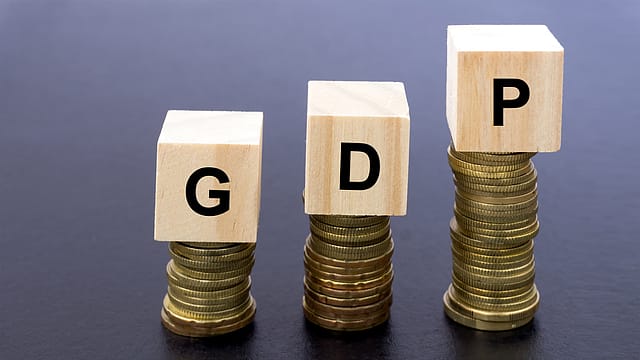Budget 2022: Economic Survey pegs FY23 GDP at 8%-8.5%
ADVERTISEMENT

The Economic Survey 2021–22 tabled by finance minster Nirmala Sitharaman in the Lok Sabha has pegged FY23 Indian GDP growth in the range of 8%-8.5% even as it has cautioned on the "uncertain" global environment on account of a new Covid-19 variant, and the rising global inflation and liquidity withdrawal.
"With the vaccination programme having covered the bulk of the population, economic momentum building back and the likely long-term benefits of supply-side reforms in the pipeline, the Indian economy is in a good position to witness GDP growth of 8.0-8.5% in 2022-23," the survey says.
"Nonetheless, the global environment still remains uncertain. At the time of writing, a new wave in the form of the Omicron variant was sweeping across the world, inflation had jumped up in most countries, and the cycle of liquidity withdrawal was being initiated by major central banks. This is why it is especially important to look at India’s macro- economic stability indicators and their ability to provide a buffer against the above stresses," it says.
Agriculture and allied sectors have been the least impacted by the pandemic and the sector is expected to grow by 3.9% in 2021-22 after growing 3.6% in the previous year, it adds.
"Advance estimates suggest that the GVA of Industry (including mining and construction) will rise by 11.8 per cent in 2021-22 after contracting by 7 per cent in 2020-21. The Services sector has been the hardest hit by the pandemic, especially segments that involve human contact. This sector is estimated to grow by 8.2 per cent this financial year following last year’s 8.4 per cent contraction. Total Consumption is estimated to have grown by 7.0 per cent in 2021-22 with significant contributions from government spending," the survey adds.
December 2025
The annual Fortune 500 India list, the definitive compendium of corporate performance, is out. This year, the cumulative revenue of the Fortune 500 India companies has breached $2 trillion for the first time. Plus, find out which are the Best B-schools in India.
“Similarly, Gross Fixed Capital Formation exceeded pre-pandemic levels on the back of ramped up public expenditure on infrastructure. Exports of both goods and services have been exceptionally strong so far in 2021-22, but imports also recovered strongly with recovery in domestic demand as well as higher international commodity prices,” it says.
Pointing at India’s balance of payments, which remained in surplus throughout the last two years, it said, “This allowed the Reserve Bank of India to keep accumulating foreign exchange reserves (they stood at US$ 634 billion on 31st December 2021). This is equivalent to 13.2 months of merchandise imports and is higher than the country’s external debt. The combination of high foreign exchange reserves, sustained foreign direct investment, and rising export earnings will provide an adequate buffer against possible global liquidity tapering in 2022-23.”
“The fiscal support given to the economy as well as to the health response caused the fiscal deficit and government debt to rise in 2020-21. However, a strong rebound in government revenues in 2021-22 has meant that the government will comfortably meet its targets for the year while maintaining the support, and ramping up capital expenditure,” the survey said.
The strong revival in revenues (revenue receipts were up over 67% YoY in April-November 2021) means that the government has fiscal space to provide additional support if necessary.
According to the first advance estimates released by the government in January, GDP is expected to grow 9.2% in 2021-22. The estimate is lower than the 9.5% GDP growth estimated by the Reserve Bank of India's (RBI) monetary policy committee last month, but signals a reversal from 7.3% contraction registered during the Covid-19 pandemic hit previous year (2020-21).
